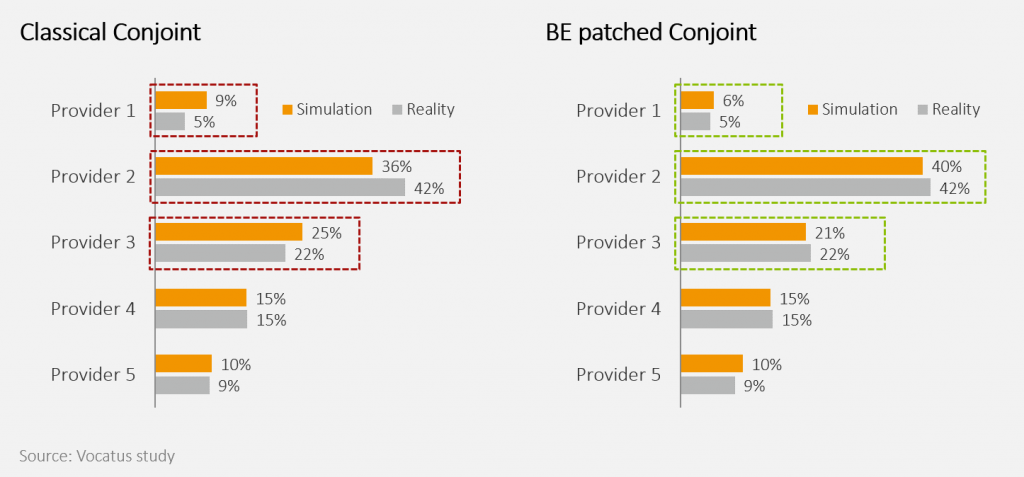Conjoint analyses have been considered the gold standard of customer-centric offer design since the late 1950s. And rightly so, for several reasons:
#1 Understanding value drivers: Conjoint analyses enable us to determine, even with complex products (automobiles, telco plans, insurance policies, etc.), the monetary value added by individual offer components. And to decide which investments in product development are (not) worthwhile.
#2 Analyzing preference structures: Conjoint allows us to quantify customer preferences for offers composed of various offer elements. It thus provides a good basis for deciding which offers should be brought to market (and which not).
#3 Predicting purchase decisions: The greatest advantage of conjoint analysis is the ability to predict purchase decisions. From the preference structures, it is possible to simulate how many customers would decide for each offer in a certain market scenario and how many customers (from which competitors) would be won if one improves one’s own offer or brings a new offer onto the market.
As elegant as this model is, the straightforward translation of preferences into decision-making behavior is not allowed. This is because one of the core findings of Behavioral Economics states that decision-making behavior cannot be directly derived from customer preferences. There are several reasons for this:
#1 Cognition: Many customers often simply do not know what they want and need. For example, one third of mobile phone users do not even know how much data volume their current tariff contains. And less than a fifth know the monthly price of their tariff to an accuracy of +/-10%.
#2 Motivation: For example, due to risk aversion, customers often stay with their mobile phone provider, even though they know that there are offers on the market that better serve their needs (i.e. their preferences). In fact, 70% of mobile phone customers are fully aware that they are not with the provider that offers them the best value for money.
#3 Behavior: Customers react much less strongly to advantageous offers on the market than classical conjoint analysis would suggest. For example, only about 10% of those mobile phone customers who know that they are not with the cheapest provider for them are planning to change providers.
When translating preference structures into decision-making behavior, conjoint analyses must therefore take into account cognitive, motivational and behavioral information. Then their predictions (“BE patched Conjoint”) are much closer to the actual market conditions:

Read more about Conjoint Analysis here.




